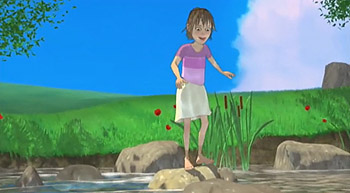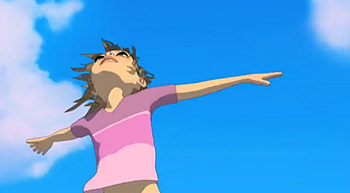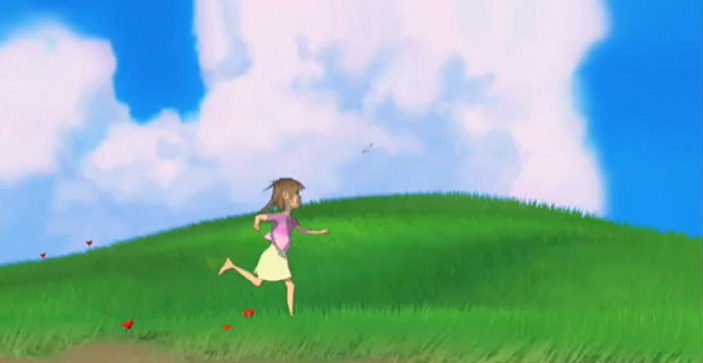"A little girl plays in the outdoors enjoying nature in this music video with a critical view of humanity."
“Respire le clip” is an animated music video created by Jerôme Combe, Stéphane Hamache and André Bessy for the song “Respire” by French rock band Mickey 3D, released as part of the band’s album “Tu vas pas mourir de rire”.
The video deals with an environmentalist subject and a critical view of human society, following the lyrics of the original song.
Analysis: First Look

Saturated colors with prevalent blues and greens, and a toon aesthetic
“Respire” follows the line of music videos that present a story (the other common one is that of various sequences edited in parallel, some of them showing the band performing). The lyrics in this case set the tone for the visuals and the subjects they deal with but do not dictate the unfolding story. As stated by the authors of the video, they weren’t given any constraints regarding what they could develop, and they aimed at making a piece with a rather dark ending.
There is no standard conflict, no opposing forces. And in spite of this the video is quite gripping. In addition, the ending delivers a good blow to viewers and leaves them with a number of questions. In our analysis we’ll take a look at which filmmaking tools the directors used to achieve these objectives. Let’s begin!
Shot Types and Camera Elements
Long and full shots are prevalent in Respire, which are used to follow the energetic action of the character, mixed with close-ups to emphasize certain events, transmit the character’s emotion or create visual rhythm.
Camera Moves

One of the spinning camera sequences is about to start (0m42)
Respire uses dollys, pans, spinning cameras, zooms, crane shots. In the case of the video camera POVs (at the beginning of the film), pans and zooms are used to make it visible that it is actually the POV of a video camera. Dolly moves and pans are used to create visual rhythm, to follow action, to reveal parts of the scene or to transmit the emotion of the character (spinning camera at 0m46 or fast dolly at 1m47).
A few static cameras are used, usually with the character/objects moving within the frame.
A change of pace takes place by the end of the film, slower paced camera movements are used (3m07) that help create contrast with the dynamic POVs of the cameras with which they’re edited together.



















Recent Comments